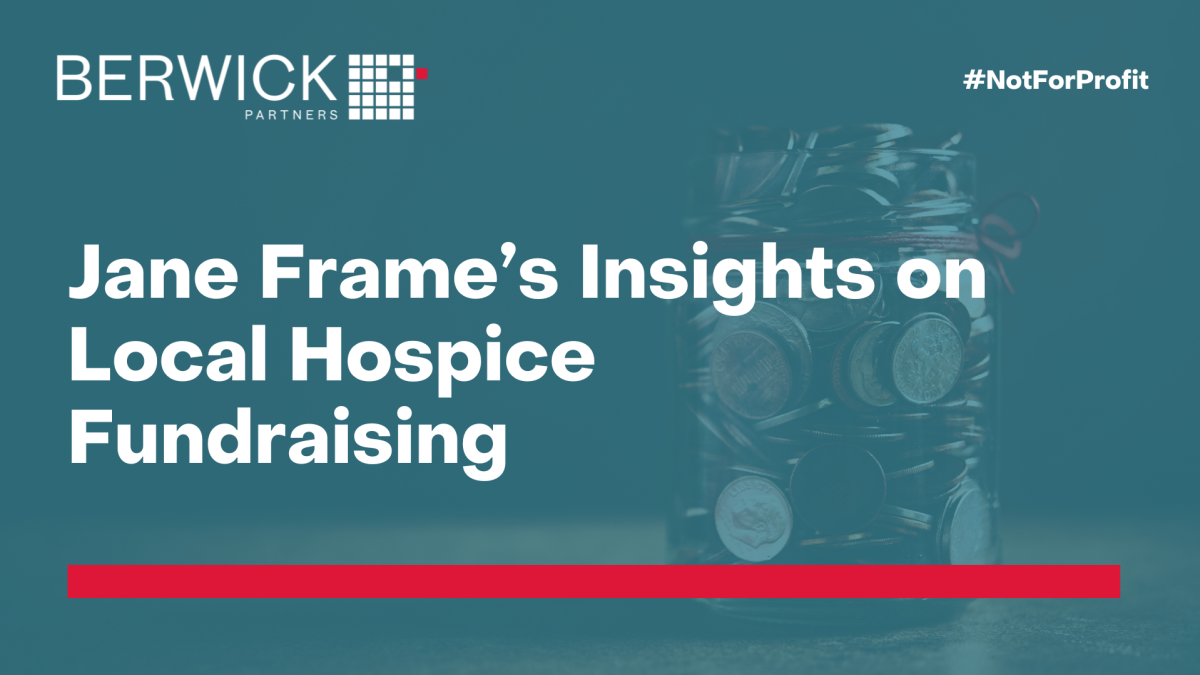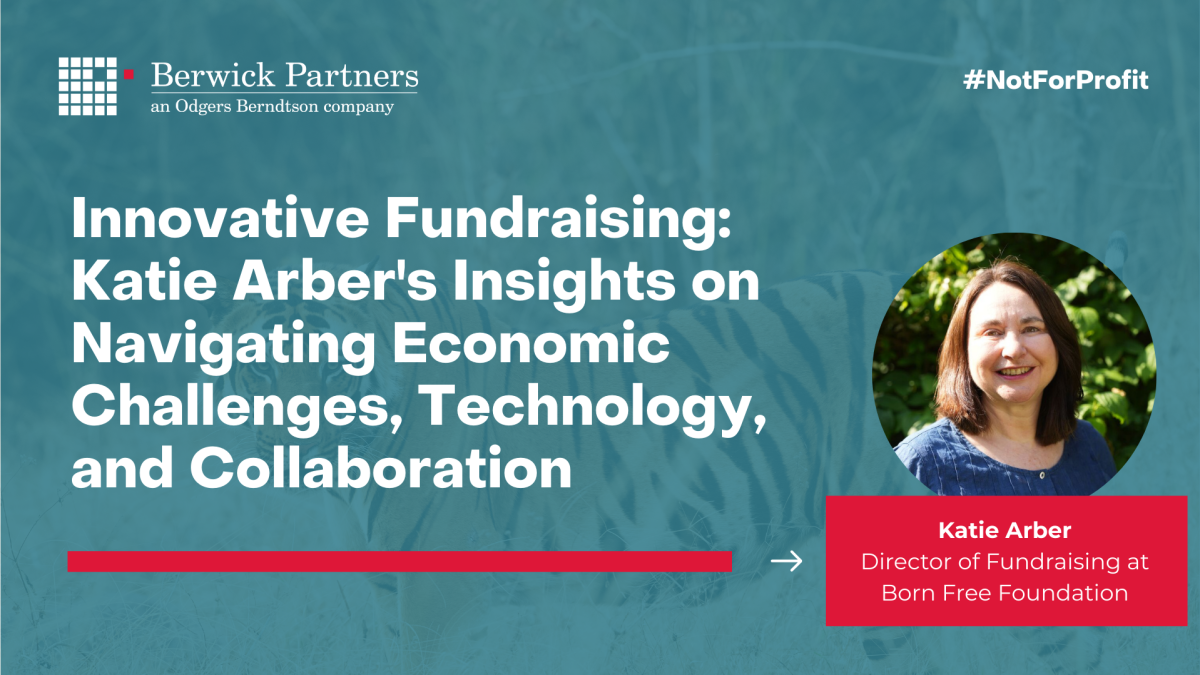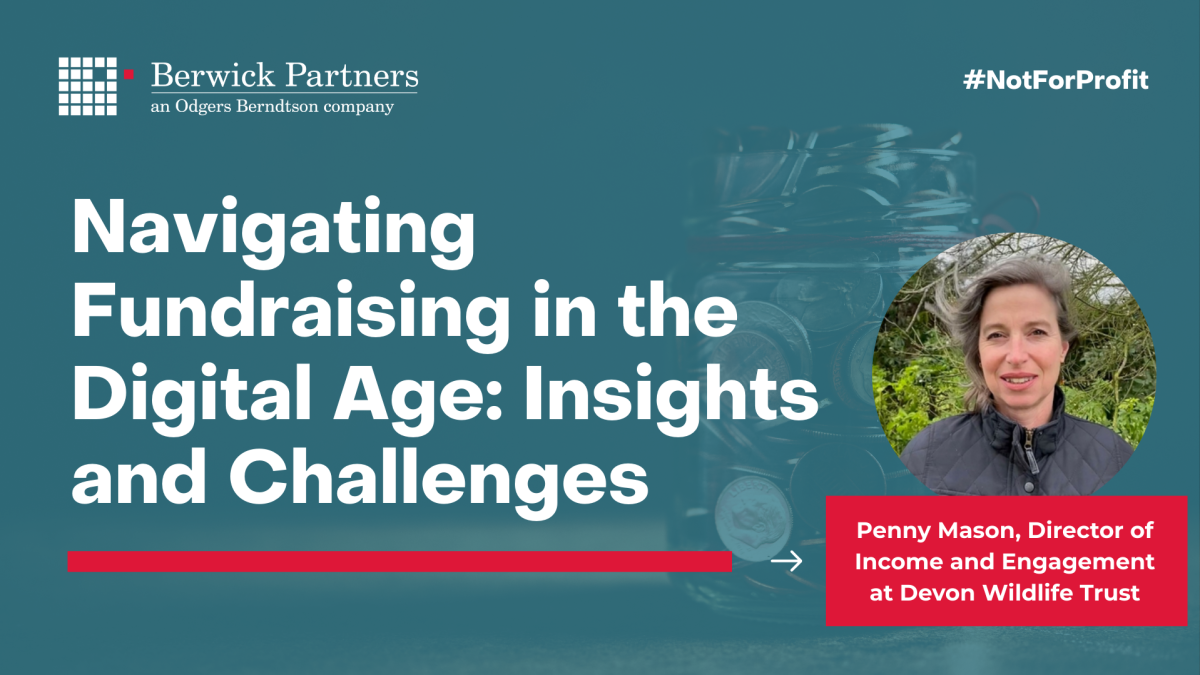Exploring the Worlds of Non-Profit Leaders: A Comparative Analysis
In the current landscape for not-for-profit organisations, leaders face unique challenges and opportunities. This article delves into the worlds of three senior not-for-profit fundraising leaders: Penny Mason from Devon Wildlife Trust, Jane Frame from Saint Francis Hospice, and Katie Arber from Born Free Foundation. By examining their perspectives, I uncover both the common threads and distinct differences that shape their experiences.
Digital Transformation in charities: Fundraising and Greater Impact
The digital era has brought about significant changes in the way not-for-profits operate, this has been in relation to user offering, where charities adopt new digital technologies to support their services. This can include things like, chatbots particularly in service led charities to support with high levels of demand, providing alternative forms of support. This can also include social media platforms to provide stronger engagement with supporters.
From an internal perspective, fundraising departments for many charities have invested heavily in digital platforms to provide deep insight into customer journeys. Charities that use such software receive 20% growth of donor contributions (Charity Digital). Katie Arber discusses the importance of using technology wisely to manage relationships and enhance efficiency. She states, “Our relationship management system is fundamental to everything we do.”
For Penny Mason the digital landscape can present both opportunities and challenges. She explains, “The digital era and staying on top of digital transformations is an ongoing challenge and it just becomes more and more acute. Some of these challenges concern issues around security. On one hand, digital platforms offer new avenues for engagement and fundraising. On the other hand, they require constant vigilance and adaptation. “It’s staying abreast of that… So, staying on top of data security is a massive one,” she explains. From my experience, this is particularly challenging for small to medium-sized organisations with limited budgets.
Jane Frame from a local hospice focuses on the practical aspects of digital fundraising, particularly the transition from traditional collection boxes to digital ones. She mentions, “We’ve done a lot with collection boxes over the years… why haven’t we got hundreds of digital boxes out?” This shift requires significant investment but does possess security challenges, but it also offers the potential for greater returns.
Recruitment and Skill Sets
Recruitment emerges as a significant challenge for all three leaders. Jane Frame points out the difficulty in attracting skilled professionals to a local hospice, especially those willing to work in end-of-life care. She shares, “I had 14 possible candidates, none of them wanted to work in end-of-life.” This highlights a broader issue within the non-profit sector: the need to attract and retain talent in specialised areas, specifically highly emotive spaces.
Penny Mason and Katie Arber also discuss the evolving skill sets required in fundraising. Penny highlights the need for digital proficiency and storytelling abilities. “We need people who are good at digital, but increasingly because it’s such a cluttered and noisy space, that ability to really tell a good story and capture interest is critical,” she says. In addition to this Katie highlights the competitive nature of the job market and the importance of retaining talented staff. She observes, “It’s a really competitive market out there… people are looking not just for a job that they feel is rewarding and interesting, but also in terms of salary.”
Given the wider economic factors concerning the cost-of-living crisis, salary has begun to play a bigger part in attracting strong talent in a candidate led market. This can present a hurdle for charities who are often under tight financial constraints.
Both leaders stress the importance of adaptability and strategic thinking. Penny notes the need for fundraisers to be multifaceted in terms of skillset. There is a need to be innovative to stand out in a highly competitive landscape.
Economic and External Factors
The economic landscape significantly impacts fundraising strategies. Katie Arber notes the shift in donor behaviour due to economic conditions, stating, “People are honing what they’re giving regularly.” Donors are being more selective in which charities they support. However, she also sees opportunities in high-value income streams and corporate partnerships. “There are people who are very immune to what’s going on in the world, and for the charity I work for, that actually is creating opportunities.” This means that could be variations in the success of different fundraising streams, for example Jane Frame discusses the scrutiny of reserves by grant funders and the shift towards corporate social responsibility initiatives. She explains, “Corporates are wanting to get their staff to do smaller fundraising rather than just one big check.” This may lead to the need for longer commitments or more innovation between both parties to ensure fundraising targets and CSR objectives are met. Not-for-profits will inevitably begin to adapt their strategies and find new ways to engage with corporate partners.
Penny Mason highlights the influence of large funders on charitable priorities, particularly in the heritage space. She warns, “If the lottery shifts their priorities significantly, that has a massive impact on what we can do.” This underscores the need for non-profits to stay informed about funding trends and adapt their strategies accordingly.
Organisational Culture and Strategy
Each leader emphasises the importance of aligning organisational culture with fundraising strategies. Penny Mason stresses the need for community building and long-term relationship management. She asserts, “Fundraisers are not there to fix the financial problems of an organisation; they’re there to fundraise what you reasonably can for the context that you’re in.” This approach requires a shift in mindset, focusing on sustainability and relationship-building rather than short-term financial gains. But also highlights that charities needs to be ready to execute a robust fundraising strategy.
Conclusion
Penny Mason, Jane Frame and Katie Arber have each provided their unique perspective on the world of not-for-profit fundraising. They discuss common challenges like digital transformation, recruitment and economic factors, whilst highlighting the nuances they face in their own specific organisational contexts. This combined wisdom and knowledge offers invaluable guidance for this engaged in this highly important sector.






